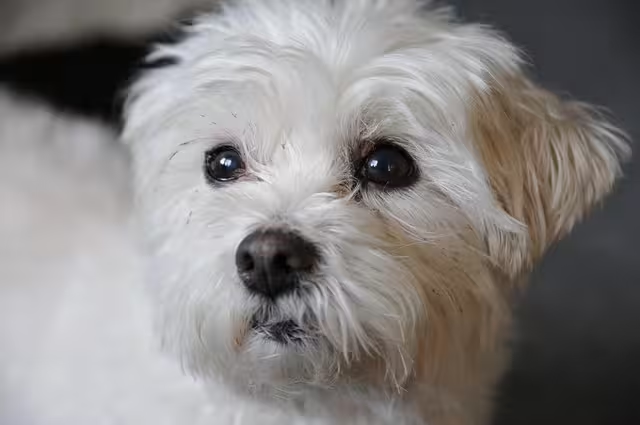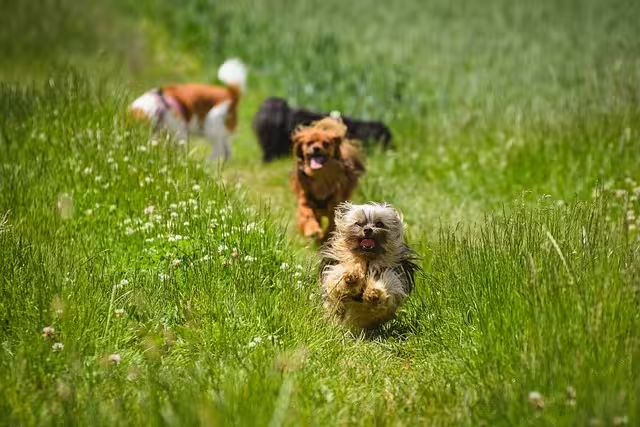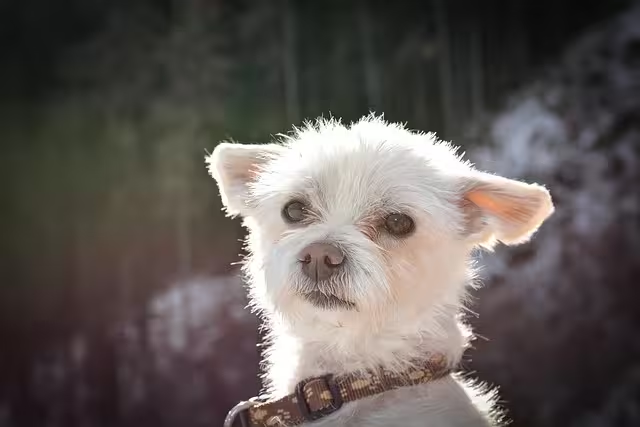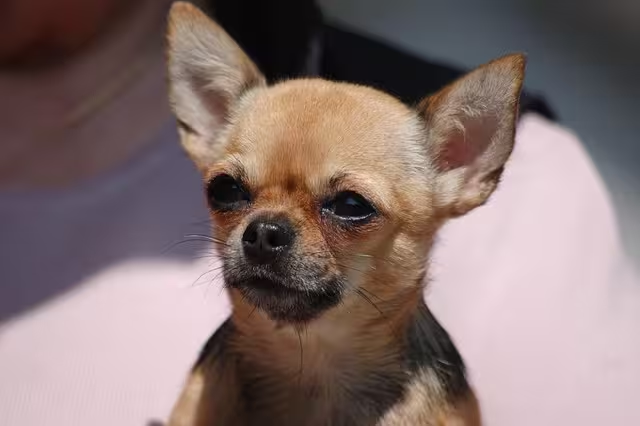When it comes to dog breeds, the Cavalier King Charles Spaniel is often celebrated for its delightful temperament· Known for their affectionate demeanor and eagerness to please, Cavaliers make outstanding companions, fitting seamlessly into various family environments· Understanding their temperament is essential for prospective owners and current guardians alike, as it directly influences training approaches and techniques· In this blog, we will explore the unique personality traits of Cavaliers and how these characteristics can shape effective training strategies·
The Affectionate Nature of Cavaliers
Cavalier King Charles Spaniels are renowned for their affectionate and friendly nature· They thrive on human interaction and are known to form strong bonds with their families· This breed is often described as “people-oriented,” meaning they genuinely enjoy being around their owners and participating in daily activities· Their affectionate disposition makes them excellent companions for families, singles, and seniors alike·
One of the standout traits of Cavaliers is their ability to sense human emotions· They are known to comfort their owners during times of stress or sadness, offering a gentle nuzzle or a warm cuddle· This emotional sensitivity not only enhances their role as loyal companions but also plays a significant role in their training· Cavaliers are incredibly responsive to positive reinforcement and praise, which aligns perfectly with their desire to please their owners·
Eager to Please
Cavaliers are often referred to as “eager to please” dogs, and this trait is a significant advantage when it comes to training· Their innate desire to make their owners happy means they are usually highly motivated to learn and follow commands· This eagerness allows for a more enjoyable training experience for both the dog and the owner·
However, it’s important to recognize that this eagerness can sometimes lead to overexcitement· Cavaliers may become distracted by their surroundings, especially in new environments· This characteristic means that training sessions should be engaging and interactive to maintain their focus· Incorporating play and rewards into training can help channel their enthusiasm in a positive direction·
Training Approaches for dog breeds
Given their affectionate and eager-to-please nature, training a Cavalier King Charles Spaniel can be a fulfilling experience· Here are some effective training approaches tailored to their temperament:
Positive Reinforcement
Positive reinforcement is one of the most effective training techniques for dog breeds· This method involves rewarding desired behaviors with treats, praise, or playtime· Since Cavaliers are highly responsive to positive feedback, this approach encourages them to repeat the behaviors you want to promote·
For example, when teaching a Cavalier to sit, you can use a treat to guide them into the position· Once they sit, offer praise and the treat as a reward· Over time, they will associate the command “sit” with the positive outcome of receiving a treat· This method not only reinforces good behavior but also strengthens the bond between you and your dog breeds·
Consistency is Key
Consistency is crucial when training Cavaliers· They thrive on routine and clarity, so establishing a consistent training schedule helps them understand what is expected of them· Use the same commands and cues each time you train to prevent confusion· Whether you’re teaching basic commands, leash manners, or house training, being consistent in your approach will yield better results·
Additionally, involve all family members in the training process to ensure that everyone uses the same commands and techniques· This consistency helps reinforce the training and prevents mixed messages that could confuse your dog breeds·
Socialization
Socialization is an essential aspect of training for any dog breeds, but it is especially important for Cavaliers due to their friendly and sociable nature· Exposing your Cavalier to a variety of people, animals, and environments from an early age will help them develop confidence and prevent behavioral issues later on·
Take your Cavalier to dog breeds classes, dog parks, and public places where they can interact with other dogs and people· Positive experiences during socialization will contribute to their overall well-being and enhance their ability to adapt to new situations·
Addressing Challenges in Training
While Cavaliers are generally eager learners, some challenges may arise during training· Understanding their temperament can help you address these issues effectively·
Distraction and Focus
Cavaliers can be easily distracted, especially in busy or unfamiliar environments· To combat this, choose training locations that are free from distractions, especially during the initial stages of training· As your Cavalier becomes more confident with commands, gradually introduce them to busier environments to help them learn to focus despite distractions·
Using high-value treats or toys can also help maintain their attention during training sessions· If your Cavalier becomes distracted, gently redirect their focus back to you with a treat or verbal cue· Patience and persistence are key when working with a distracted dog breeds·
Stubbornness
While Cavaliers are generally eager to please, some individuals may display stubbornness, particularly when they sense that training is becoming repetitive or boring· To keep their interest piqued, vary your training sessions by incorporating new commands, tricks, or games· Keeping training fun and engaging will help prevent any signs of stubbornness and reinforce their motivation to learn·
Effective Training Techniques for dog breeds
Positive Reinforcement: A Key to Success
Positive reinforcement is arguably the most effective training technique for Cavaliers· This approach involves rewarding desired behaviors with treats, praise, or playtime, encouraging your dog breeds to repeat those behaviors· Given the Cavalier’s affectionate and eager-to-please nature, they respond exceptionally well to this method·
How to Implement Positive Reinforcement
- Identify Rewards: First, identify what motivates your dog breeds· This could be treats, toys, or even verbal praise· High-value treats, such as small pieces of chicken or cheese, are often effective during training sessions·
- Timing is Everything: For positive reinforcement to be effective, rewards must be given immediately after your Cavalier performs the desired behavior· This helps them associate the action with the reward, reinforcing the behavior in their mind·
- Be Generous with Praise: Alongside treats, verbal praise and affection are crucial· Use an enthusiastic tone to let your Cavalier know that they did a great job· This emotional reinforcement strengthens the bond between you and your dog breeds
- Gradually Reduce Treats: While it’s important to use treats at first, as your Cavalier learns the commands, you can gradually reduce the frequency of treats while maintaining praise· This helps maintain good behavior without relying solely on food rewards·
Consistency: The Foundation of Training
Consistency is critical in dog training, especially for a breed like the Cavalier King Charles Spaniel· Establishing a consistent training routine helps your dog understand what is expected of them and creates a structured learning environment·
Creating a Consistent Training Routine
- Set Clear Commands: Use the same commands for specific actions every time· Whether you are teaching “sit,” “stay,” or “come,” consistency in your verbal cues is essential· Avoid using variations that may confuse your dog breeds·
- Involve the Whole Family: If you live with others, ensure that everyone uses the same commands and training techniques· Mixed signals can lead to confusion and hinder the training process·
- Establish a Training Schedule: Set aside dedicated time for training sessions· Short, frequent sessions of 5-10 minutes are often more effective than longer sessions, especially for Cavaliers, who can become distracted easily· Incorporate training into daily routines to reinforce learning·
- Be Patient: Training takes time, and it’s essential to be patient with your dog breedsr· If they are struggling with a particular command, take a step back and revisit the basics· Consistency and patience go hand in hand when guiding your dog breeds through the learning process·
Socialization: Building Confidence and Good Behavior
Socialization is a crucial aspect of training that should not be overlooked, especially for Cavaliers· This breed is naturally friendly and sociable, but proper socialization helps ensure they remain well-adjusted and confident in various settings·
The Importance of Socialization
- Exposure to Different Environments: Introducing your Cavalier to various environments, such as parks, busy streets, and public spaces, helps them become accustomed to different sights, sounds, and smells· This exposure prevents anxiety and fear around unfamiliar situations·
- Meeting Other Dogs and People: Regularly allowing your Cavalier to interact with other dog breeds and people will help them develop proper social skills· Arrange playdates with other friendly dogs or enroll your Cavalier in dog breeds classes to enhance their socialization experience·
- Positive Experiences: Ensure that socialization experiences are positive· Use treats and praise to reinforce good behavior during interactions· If your Cavalier seems anxious or fearful, take a step back and allow them to observe from a distance before gradually introducing them to new experiences·
- Early Socialization: The critical period for socialization is during puppyhood, typically between 3 and 14 weeks of age· Exposing your Cavalier to various experiences during this time will have a lasting positive impact on their behavior as they grow·

Addressing Behavioral Challenges
While Cavaliers are generally well-behaved, some common behavioral challenges may arise during training· Understanding how to address these challenges can lead to successful outcomes·
Distraction Management
Cavaliers can be easily distracted by their surroundings, especially in busy environments· To help maintain focus during training sessions:
- Choose a quiet, distraction-free area for initial training sessions·
- Gradually introduce distractions as your Cavalier becomes more confident in their commands·
- Use high-value treats or toys to keep their attention when distractions are present·
Overcoming Stubbornness
Although Cavaliers are eager to please, some individuals may exhibit stubbornness, particularly if they feel training sessions are repetitive or tedious· To combat this:
- Incorporate variety into training sessions by teaching new commands or tricks·
- Use engaging games that combine learning with fun to keep your dog breeds interested·
- Keep sessions short and enjoyable to prevent boredom·
Addressing Fear or Anxiety
If your Cavalier shows signs of fear or anxiety during training or socialization, it’s essential to approach the situation with sensitivity· Consider the following:
- Never force your dog breeds into situations that cause fear; instead, allow them to observe from a safe distance·
- Gradually desensitize them to the source of their fear using positive reinforcement·
- Consult with a professional dog breeds trainer or behaviorist if anxiety persists·
Overcoming Common Training Challenges with Cavalier King Charles Spaniels
Understanding the Cavalier’s Temperament
Before diving into the training challenges, it’s important to recognize the temperament of the Cavalier King Charles Spaniel· This breed is affectionate, eager to please, and generally friendly, making them excellent companions· However, their sociable nature can also lead to distractions during training sessions· Understanding their personality traits is the first step in overcoming the hurdles you may encounter·
Eager to Please but Easily Distracted
Cavaliers have a strong desire to make their owners happy, which is a significant advantage when it comes to training· However, their friendly and curious demeanor can lead to distractions, especially in new or stimulating environments· They may become easily sidetracked by sounds, smells, or other dog breeds, making it challenging to maintain their focus during training sessions·
Common Training Challenges and How to Overcome Them
1· Distractions During Training Sessions
Distractions are perhaps the most common challenge faced by Cavalier owners· Whether training at home or in a public space, various stimuli can divert your dog breeds attention·
Strategies to Minimize Distractions
- Choose a Quiet Training Environment: Begin training in a quiet, distraction-free area where your Cavalier can focus solely on you· As your dog breeds becomes more proficient with commands, gradually introduce them to environments with more distractions·
- Use High-Value Treats: When distractions are present, use high-value treats that your Cavalier loves· This helps maintain their focus on you rather than on what’s happening around them· Experiment with different treats to find what truly excites your dog breeds·
- Practice Short Sessions: Keep training sessions short and engaging· A 5-10 minute session can be more effective than a longer one, especially for a breed that can lose focus quickly· During these short sessions, focus on one command or trick to reinforce learning·
- Incorporate Play: Combine training with play to keep your Cavalier engaged· For instance, after successfully completing a command, reward them with a fun game of fetch· This not only makes training enjoyable but also reinforces their desire to focus on you·
2· Stubbornness and Resistance to Commands
While Cavaliers are generally eager to please, some may exhibit stubbornness or resistance, particularly if they sense that training is becoming repetitive or tedious· This behavior can stem from boredom or frustration·
Strategies to Address Stubbornness
- Vary Training Techniques: To combat stubbornness, mix up your training techniques· Incorporate new commands, tricks, or games into your sessions· Keeping things fresh and exciting will help maintain your Cavalier’s interest and motivation·
- Implement Positive Reinforcement: Continue to use positive reinforcement techniques· If your Cavalier is resistant to a command, reward them for any small progress they make· This encourages them to try again without feeling overwhelmed·
- Break Down Commands: If your Cavalier struggles with a particular command, break it down into smaller, manageable steps· For example, when teaching “stay,” start with short durations and gradually increase the time as they succeed· This creates a sense of accomplishment and reduces frustration·
- Be Patient and Consistent: Training takes time, especially with a stubborn dog breeds· Be patient and maintain a consistent approach· Avoid showing frustration, as this can negatively impact your Cavalier’s willingness to learn· Celebrate small victories to keep morale high·
3· Building Focus and Attention
Cavaliers can struggle with maintaining focus during training, particularly if they are excited or distracted by their surroundings· Building their attention span is key to successful training·
Strategies to Improve Focus
- Use Engaging Commands: Start with commands that your Cavalier already knows and is comfortable with· This helps boost their confidence and keeps their attention on you· Gradually introduce new commands once they are focused·
- Practice “Look at Me”: Teach your Cavalier to make eye contact by using the command “look at me·” Hold a treat close to your face and say the command· When they make eye contact, reward them· This exercise can help redirect their focus back to you during training·
- Limit Training Time: As mentioned earlier, shorter training sessions can be more effective for maintaining focus· If your Cavalier starts to lose interest, it’s a sign to wrap up the session· Ending on a positive note will leave them eager for the next training opportunity·
- Reduce Environmental Stimuli: When training, minimize distractions by controlling the environment· Close windows to limit outside noise, and avoid areas with heavy foot traffic· Gradually increase the level of distractions as your dog breeds becomes more proficient·
4· Dealing with Fear or Anxiety
Cavaliers can be sensitive dog breeds, and fear or anxiety can hinder their training progress· Whether it’s fear of loud noises, unfamiliar people, or other dogs, addressing these feelings is essential for successful training·
Strategies to Alleviate Fear and Anxiety
- Gradual Exposure: If your Cavalier is fearful of certain stimuli, gradually expose them to those situations in a controlled manner· For instance, if they are scared of unfamiliar dog breeds, allow them to observe from a distance before gradually closing the gap·
- Create Positive Associations: Help your Cavalier associate positive experiences with their fears· Use treats and praise when they encounter something that makes them anxious· This will help them build confidence over time·
- Provide a Safe Space: Ensure your Cavalier has a safe space at home where they can retreat when feeling overwhelmed· This can be a cozy crate or a designated area with their favorite toys and blankets·
- Consult a Professional: If your Cavalier’s fear or anxiety is severe, consider consulting a professional dog trainer or behaviorist· They can provide tailored strategies to help your dog overcome their fears and improve their overall behavior·

The Role of Socialization in Overcoming Challenges
Socialization is an integral part of training that can help Cavalier King Charles Spaniels become well-adjusted and confident in various situations· Proper socialization reduces fear and anxiety and helps mitigate distractions during training·
Strategies for Effective Socialization
- Early Socialization: Start socializing your Cavalier as early as possible, ideally during the critical socialization period (between 3 and 14 weeks)· Expose them to a variety of people, animals, and environments to build their confidence·
- Puppy Classes: Enroll your Cavalier in puppy training classes that emphasize socialization· These classes provide opportunities for your dog to interact with other dogs and people in a controlled environment·
- Regular Outings: Take your Cavalier on outings to different places, such as parks, pet stores, and outdoor events· Encourage positive interactions with new experiences, ensuring that they are comfortable and relaxed·
- Continued Socialization: Socialization should be an ongoing process· Continue to expose your Cavalier to new experiences throughout their life· This helps maintain their confidence and adaptability in various situations·
Conclusion
Training a Cavalier King Charles Spaniel can be a rewarding experience when equipped with the right strategies to overcome common challenges· By addressing distractions, stubbornness, and focus issues while emphasizing the importance of socialization, you can foster a well-behaved companion who thrives in various situations·
Patience, consistency, and positive reinforcement are key components of successful training· Embrace the journey, celebrate small victories, and build a strong bond with your dog breeds· With dedication and the right approach, your Cavalier King Charles Spaniel will not only become a cherished member of your family but also a well-mannered and confident companion ready to take on the world with you·







